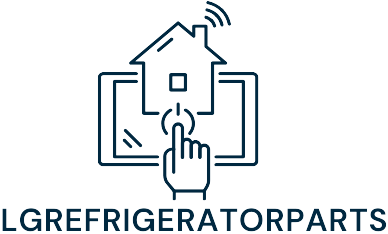Table of Contents
ToggleBuying a home is like dating—everyone wants to find the perfect match, but first, there’s that awkward moment called the down payment. It’s the financial equivalent of showing up with flowers on a first date. Without it, the chances of sealing the deal drop faster than a bad pickup line.
Understanding Real Estate Down Payments
Real estate down payments play a crucial role in buying a home. These payments often determine not just eligibility for a mortgage but also the financing terms.
Definition of Down Payments
Down payments represent the portion of a home’s purchase price that a buyer pays upfront. These payments typically range from 3% to 20% of the total price. A higher down payment can lead to lower monthly mortgage payments and better interest rates. Depending on the type of loan, some programs may require only a minimal down payment, while others often necessitate a larger upfront investment. Buyers must assess their financial situation to determine an appropriate amount for their down payment.
Importance in Real Estate Transactions
Down payments significantly impact real estate transactions. These payments establish credibility with lenders, who view them as a sign of financial commitment. A substantial down payment can also lower the overall loan amount, reducing monthly payments and interest costs. Additionally, less than a 20% down payment might incur private mortgage insurance, adding to the monthly costs. Understanding down payment implications helps buyers make informed decisions, leading to a more favorable home-buying experience.
Types of Down Payments

Different types of down payments cater to various financial situations. Understanding each option can significantly impact the overall home-buying experience.
Conventional Down Payments
Conventional down payments often range from 3% to 20% of a property’s purchase price. Buyers aiming for lower monthly payments generally benefit from higher down payments. Lenders prefer substantial contributions, as they indicate financial stability. A 20% down payment typically avoids private mortgage insurance, which adds to monthly expenses. Opting for a conventional loan means buyers can secure better interest rates, enhancing affordability. Experienced homebuyers might leverage this route, positioning themselves favorably in negotiations.
FHA and VA Loan Down Payments
FHA and VA loans present unique down payment options. FHA loans usually require a minimum of 3.5% down, accommodating first-time homebuyers. In contrast, VA loans often allow for zero down payment for eligible veterans and active service members. Such accessibility makes government-backed loans attractive, especially for those with limited savings. Lower upfront costs can lead to faster home purchases for qualified individuals. Understanding eligibility criteria is essential to maximize benefits and streamline the buying process.
Factors Influencing Down Payment Amounts
Several factors affect the down payment amounts required for purchasing a home. These include the property’s price and the loan type.
Property Price
Property price significantly impacts the down payment amount. For homes priced at $300,000, a typical 20% down payment amounts to $60,000, while a 3% down payment equates to only $9,000. Buyers should consider their budget and market conditions when calculating down payments. In competitive markets, offering a larger down payment might signal serious intent to sellers, enhancing the chances of securing the property. On the other hand, high property prices may limit available cash for a down payment, influencing the buyer’s overall purchasing power.
Loan Type
Loan type determines down payment requirements for buyers. Conventional loans often require a down payment ranging from 3% to 20%, with lenders favoring higher contributions for better interest rates. FHA loans offer a minimum down payment of 3.5%, aiding those with lower credit scores or limited savings. VA loans are particularly beneficial for eligible veterans, allowing 0% down payments, making homeownership more accessible. Buyers should assess their financial situation and evaluate different loan types to identify the most suitable down payment options. Understanding these variables leads to informed financial decisions during the home-buying process.
Strategies for Saving for a Down Payment
Saving for a down payment requires a strategic approach. Implementing effective budgeting tips can help buyers reach their goals faster.
Budgeting Tips
Establishing a budget plays a crucial role in saving for a down payment. Identify fixed and variable expenses to determine areas where cuts can be made. Prioritize essential expenditures while setting aside a fixed percentage of income each month, ideally 20%. Track spending to identify unnecessary purchases that can be reduced or eliminated. Consider utilizing automated savings tools that transfer money directly into a savings account earmarked for the down payment. Utilizing windfalls, such as tax refunds or bonuses, can also accelerate savings efforts.
Considerations for First-Time Buyers
First-time buyers face unique challenges in saving for their down payment. Understanding available options can provide significant advantages. Investigating government programs and incentives designed specifically for first-time buyers can yield helpful resources. Programs may offer lower down payment requirements or grants that assist in covering initial costs. Researching local housing markets provides insights into realistic price ranges and expected down payment amounts, facilitating better financial planning. Staying informed about loan types also enables first-time buyers to select options that best align with their financial situations.
Common Myths About Down Payments
Misconceptions about down payments often create confusion for potential homebuyers. Addressing these myths can lead to a clearer understanding of the home-buying process.
Myth 1: You Need 20% Down
The belief that everyone needs a 20% down payment isn’t accurate. Many financing options exist that require less, sometimes as low as 3%. FHA loans demand a minimum down payment of 3.5%, while VA loans allow eligible veterans to put nothing down. Lower down payments can still lead to homeownership, though they may require private mortgage insurance. Understanding various loan types enhances flexibility and increases access to home financing opportunities.
Myth 2: All Down Payments are the Same
Not all down payments share the same requirements or implications. Variances occur based on loan type, lender, and individual circumstances. Conventional loans often favor larger down payments, while government-backed loans provide options for smaller amounts. A down payment’s role isn’t just quantitative; it influences interest rates and monthly mortgage payments. Considering these differences aids in choosing the right financial path when purchasing a home.
Navigating the world of real estate down payments can feel daunting but understanding its significance is key. A well-planned down payment not only enhances eligibility for favorable mortgage terms but also sets the stage for a successful home-buying experience. By considering various options and strategies for saving, buyers can position themselves for better financial outcomes.
Whether it’s leveraging government programs or debunking common myths, informed decisions empower potential homeowners. Ultimately, a thoughtful approach to down payments can lead to a smoother transition into homeownership, making the journey as rewarding as it is necessary.



